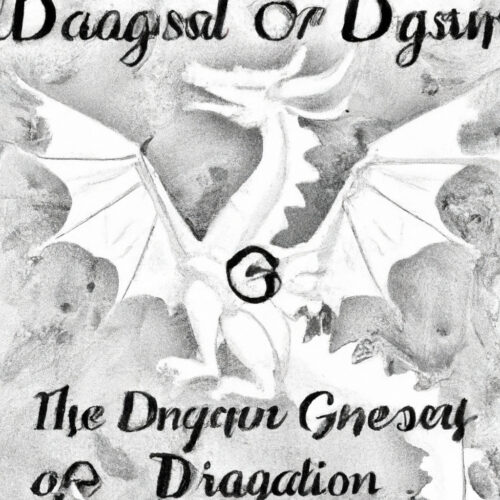Dragons have captured the imagination and fascination of humans for centuries. These mythical creatures, often depicted as powerful and majestic beings, have been a prominent feature in folklore, literature, and art. While dragons may commonly be associated with fairy tales and fantasy, what if there is more to these mythical beasts than meets the eye?
The Origins of Dragons
According to ancient legends and folklore from various cultures around the world, dragons were said to roam the Earth long before humans. They were believed to be intelligent, wise, and possessed incredible abilities such as flight and fire-breathing. In Chinese mythology, dragons were revered as divine creatures associated with luck, wisdom, and power. In European folklore, dragons were often portrayed as fierce and dangerous creatures guarding a hoard of treasure.

The Enigmatic White Dragon Society
While dragons may be seen as fictional creatures, there are those who believe in the existence of real dragons. One such organization that claims to have insight into the world of dragons is the White Dragon Society. This enigmatic society is shrouded in secrecy and has been the subject of much speculation and intrigue.
Their Mission
The White Dragon Society describes itself as a clandestine group of individuals dedicated to protecting and preserving the dragons’ existence. They believe that dragons play a crucial role in the balance of nature and hold profound wisdom that can benefit humanity.
Unveiling the Secrets
The White Dragon Society claims to possess ancient knowledge and hidden archives that shed light on the true nature of dragons. These archives supposedly contain detailed accounts of dragon encounters, historical evidence, and even ancient artifacts associated with dragons.
The Dragon Sightings
Throughout history, there have been numerous accounts of dragon sightings across different continents. Some witnesses claim to have encountered huge winged creatures with scales, while others describe serpentine creatures with fiery breath. Though often dismissed as folklore or misidentifications, these sightings have fueled the imagination and curiosity surrounding dragons.

The Loch Ness Monster
One of the most famous examples of a dragon-like creature is the Loch Ness Monster. Located in Scotland, Loch Ness is believed to be the home of a massive aquatic creature resembling a plesiosaur. While skeptics argue that the creature is merely a myth or a case of mistaken identity, believers remain hopeful that this elusive creature may prove to be a real dragon.
Scientific Explanations
While the existence of dragons remains unproven, some scientists have proposed alternative explanations for dragon-like creatures. Cryptozoologists, for instance, suggest that dragons could be ancient species that have managed to survive hidden from human eyes. Furthermore, theories of undiscovered or extinct reptiles have also been put forth to explain sightings of dragon-like creatures.
Connecting Dragons to Mythology
Dragons have left an indelible mark on human mythology, often embodying powerful and opposing forces. In Norse mythology, the dragon Nidhogg is said to gnaw at the roots of the world tree, Yggdrasil, representing destruction and chaos. On the other hand, in Hindu mythology, the dragon-like creature known as Vasuki represents eternity and is associated with the divine. These diverse representations suggest that dragons hold different meanings across cultures but remain a universal symbol of power and mystery.

Concluding Thoughts
Whether dragons exist as physical beings or remain solely in the realm of myth and legend is a question that continues to captivate our imagination. While evidence for their existence remains elusive, the allure and fascination surrounding dragons persist. The White Dragon Society and other dragon enthusiasts strive to uncover the secrets of these mythical creatures, hoping to shed light on their enigmatic nature and bring the world closer to understanding the true extent of their existence.



